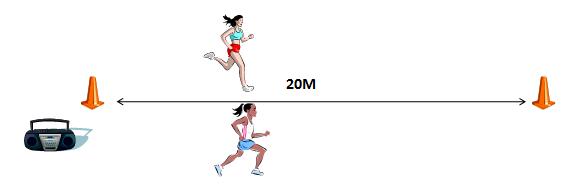So, you’ve joined the impressive world of athlete training, or maybe you’d simply like to know more about the strong group of people that left you in the dust in high school track.
Either way, you’ve arrived at the right place because I’ve put together something of a guide to understanding athletes and the fitness testing that they have to go through in order to qualify for their chosen sport.
A Quick Introduction to Fitness Tests
Before we get started, I should just point out that I wasn’t one of the ones left in the dust as I mentioned before – I was the one trying to fake a sick note so that I didn’t have to run at all.
The point is, whether you consider yourself an athlete or not, you can benefit a great deal by coming to understand athleticism and the testing procedures they go through – especially considering the fact that it could give you some extra insight, after all stamina is applied in every game.
Testing, Testing 1, 2, 3
Fitness tests come in a number of shapes and sizes, some of which are specifically designed for certain athletes and others that are appropriate for any and all athletes, such as the more commonly known anthropometric tests that include height, skinfolds and body mass.
It all depends on athletic discipline, but these tests are essentially designed to be able to determine the athlete’s cardiovascular fitness. If you’re looking for the most accurate tests, then you should be looking for the more structured ones, which are ultimately fitness tests that involve CD recordings with timed intervals and specific directions. Let’s take a look at a couple of examples.
1. 20m Multistage Fitness Test
Commonly known as the beep test, or in my case the bain of my high school existence, the 20m multistage fitness test is (to my disbelief) the easiest one that involves the use of a CD with recorded intervals.
You start at one end of the 20m stretch and have to cross it with every beep you hear. Athletes must cross before they hear the next beep and it gets tougher as you go, with the intervals between each beep getting shorter and shorter. They are then scored on the level they reach before the end of the test.
2. The Yo-Yo Intermittent Fitness Test
The yo-yo intermittent fitness test is a bit tougher, takes place over a 25m stretch that is divided into a 5m section and then a 20m section.
This time, the athlete is expected to run the 20m stretch according to the beats, but when they get back to the starting line they must then walk or jog the 5m in 10s and return to the starting line before the next beep.
Again, the time between beeps will shorten, however, this time they are given a warning and removed after the second time they fail. They are scored on the number of metres they run.
3. The JAM Intermittent Fitness Test
The hardest of the 3, this test involves a triangular circuit with each side labelled either walk, run or jog. Athletes follow accordingly, but every 2 minutes or so they have to replace the run side with a 12m sprint.
The whole circuit must be completed before each beep and they are removed as soon as they fail. The participant will then be scored on the time it took to complete the circuit.






